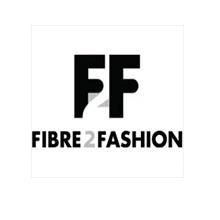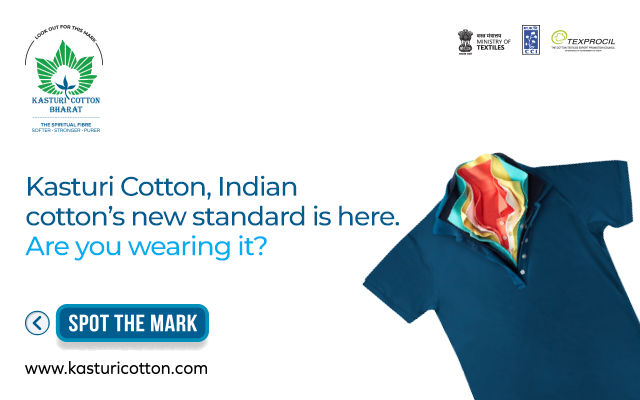Fashion brands are increasingly stepping beyond profit-making, using their influence and resources to support social causes. In fact, the public now expects companies to give back – 70 per cent of Americans say it’s important for businesses to make the world a better place. The fashion industry has answered this call. Many major brands have embedded philanthropy and community support into their business models, donating significant funds and time to causes ranging from education and healthcare to disaster relief. For example, in 2024, LVMH (parent company of Louis Vuitton, Dior, and others) announced it had allocated €40 million (~ $43 million) to global social initiatives, including education access and women’s empowerment through the Institute des Métiers d’Excellence (IME) and Foundation Louis Vuitton. This reflects a wider trend in which leading fashion companies are going beyond token gestures to embed philanthropy within corporate strategy. Doing good is becoming as important as looking good— ‘purpose’ is the new black in fashion philanthropy.
Major Philanthropic Initiatives by Fashion Brands
Fashion brands have launched a variety of philanthropic initiatives, often on a grand scale. These efforts show the industry’s commitment to causes beyond the bottom line. Notable and recent examples include:
Gucci’s CHIME FOR CHANGE
Gucci continues to build on its CHIME FOR CHANGE campaign. In 2024, Gucci announced it had surpassed $25 million in funds raised, supporting over 550 projects in 95 countries (About Chime – Gucci Equilibrium, 2024). Its ongoing partnerships with UNICEF and grassroots NGOs have expanded to include support for mental health services for refugee women and digital education tools for girls in conflict zones.
TOMS’ Community Impact Model
While TOMS pioneered the One-for-One model, in 2024, the brand evolved its mission. Instead of only donating shoes, TOMS now commits one-third of its profits to grassroots community organisations driving mental health access, education, and equity (TOMS Impact Report 2024). As of this year, it has supported over 150 community partners globally, adapting its giving model to have deeper, long-term impact.
(PRODUCT) RED Coalition
As of 2025, the (RED) initiative has raised over $800 million for the Global Fund, with renewed collaborations from fashion brands like Balmain, Louis Vuitton, and Primark. New 2024 partnerships feature sustainable, RED-branded collections, with proceeds supporting HIV treatment and COVID-19 vaccine equity programmes across Sub-Saharan Africa (Global Fund – RED Private Sector Report, 2025).
Ralph Lauren’s Pink Pony Fund
In 2024, Ralph Lauren’s Pink Pony initiative entered its 24th year, announcing a new $10 million grant package to expand mobile cancer screening units in underserved U.S. communities and rural areas in India. The initiative now also supports mental health care for cancer patients, a step welcomed by survivors’ networks (Ralph Lauren Corporate News, 2024). The campaign remains a long-standing symbol of fashion-driven health advocacy.
These are just a few highlights. From high fashion houses to casual wear labels, philanthropy is now woven into the fabric of the fashion business. Brands commonly set up corporate foundations, pledge percentages of sales to charity, or create special products and campaigns that channel funds to causes. The result is tens of millions of dollars directed annually to social programs, illustrating how fashion can be a force for good. Children in Zambia happily show off new shoes they received through TOMS’ one-for-one donation program. This iconic initiative by TOMS has provided footwear to millions of kids in need, protecting their feet and helping them meet school dress requirements – a simple gift that removes a barrier to education.
Supporting Communities: Education, Healthcare, and Relief
Beyond global fundraising campaigns, fashion brands increasingly contribute to community development through on-the-ground programmes in education, healthcare, and disaster relief. These initiatives often focus on improving the lives of people in regions where the brands operate or source products, while also responding to global crises.
Education and Empowerment
Many fashion companies are investing in education as a path to empowerment. In 2024, Lululemon launched its ‘Centre for Social Impact’ expansion, pledging $20 million over five years to support mental wellbeing and youth leadership in underserved communities globally. Meanwhile, the H&M Foundation introduced its ‘STEM 4 Her Africa’ project in 2025, focusing on girls’ digital literacy and STEM education in Kenya, Ghana, and South Africa. This programme has already reached over 60,000 young women with coding workshops and school tech labs (H&M Foundation, 2025).
Gap Inc. continues to scale its P.A.C.E. programme, which now operates in 19 countries, training over 1 million women and girls as of early 2025. The curriculum now includes digital and financial literacy, leadership training, and mental health awareness, aligning with today’s holistic development needs (Gap Inc. 2025 CSR Report).
Luxury brands are also active. Bulgari, in partnership with Save the Children, expanded its education initiatives in 2024 to support refugee education in Türkiye and Lebanon, and teacher training across Sub-Saharan Africa, impacting over 80,000 students and educators in one year alone (Save the Children International, 2024).
Healthcare and Wellness
In 2024, Chanel pledged €25 million (~$27 million) to women’s health research, including endometriosis and reproductive health care, via a new collaboration with global medical institutions (Chanel Corporate Responsibility Update, 2024). Meanwhile, Ralph Lauren extended its Pink Pony programme with mobile cancer screening units reaching rural areas in South Asia and Latin America.
During ongoing global health challenges, Uniqlo and parent company Fast Retailing donated 1.5 million items of thermal wear and jackets to humanitarian organisations supporting displaced populations during severe winter conditions in Ukraine and Afghanistan (Fast Retailing Newsroom, 2024).
Disaster Relief and Humanitarian Aid
In response to the 2024 earthquakes in Türkiye and Syria, several fashion brands mobilised quickly. Zara (Inditex) donated over €3 million (~$3.24 million) in aid and clothing supplies to affected regions and worked with local NGOs to coordinate on-ground relief distribution. Moncler provided thousands of down jackets and blankets to earthquake victims and donated funds to rebuilding schools and shelters (Inditex and Moncler press releases, 2024).
Nike continued its commitment to communities through its Black Community Commitment, extending funding to grassroots organisations in 2025, and launched a new climate resilience grant for urban communities disproportionately affected by environmental disasters (Nike Community Impact Report, 2025). The initiative funds youth-driven environmental justice projects, helping build long-term resilience.
Fashion brands today are not only first responders in crises but also partners in rebuilding, supporting health, education, and dignity in vulnerable communities.
Case Studies: Fashion Brands Making an Impact
To understand the real-world impact of these initiatives, let’s look at a few leading fashion brands and their signature social impact projects. These 2024–2025 case studies show how brands of all kinds are driving meaningful change.
Gucci – Empowering Girls and Women Worldwide
In 2024, Gucci’s CHIME FOR CHANGE initiative surpassed $25 million in funds raised, having supported 550+ projects across 95 countries (Gucci Equilibrium, 2024). Recent efforts focus on digital inclusion and reproductive health, with targeted support for women in conflict zones and marginalised communities. Gucci also launched CHIME Studio, a digital hub for feminist artists and activists, spotlighting gender justice stories from around the globe. Continuing its collaboration with UNICEF, Gucci in 2024 funded access to maternal healthcare, education, and psychosocial support for Syrian and Afghan refugee girls in Türkiye and Lebanon (UNICEF USA, 2024). Gucci’s annual CHIME Zine now reaches readers in over 30 languages, giving voice to feminist leaders and grassroots changemakers. These efforts show how Gucci integrates philanthropy into its brand culture—fashion meets feminist advocacy in a powerful, enduring way.
Ralph Lauren – Championing Cancer Care and Health
The Pink Pony Fund marked its 24th anniversary in 2024 with a new commitment: expanding mobile cancer screening and prevention units across underserved areas in India, Brazil, and the southern U.S. This follows a $10 million grant initiative announced in 2024 that aims to bring early detection tools to communities historically left out of cancer care systems (Ralph Lauren Corporate, 2024). The Ralph Lauren Centre for Cancer Prevention, which opened in Washington, D.C., continues to provide free and low-cost screenings, prioritising equity in healthcare. Ralph Lauren also partnered with public health bodies in 2024 to launch awareness campaigns on men’s mental health and breast cancer in young women. With year-round limited-edition Pink Pony apparel and community storytelling initiatives, the campaign remains a model of long-term, heartfelt corporate philanthropy.
Nike – Investing in Communities and Equality
In 2025, Nike expanded its Black Community Commitment with an additional $25 million earmarked for education equity, youth leadership, and environmental justice (Nike, Inc., 2025). A major initiative included launching Nike Rise Labs—innovation and sports mentorship centres in under-resourced U.S. neighbourhoods, aimed at building pathways for Black youth in design, tech, and sport. In parallel, the N7 Fund, which supports Native American and Indigenous communities, received a $5 million boost for wellness and youth sports programmes. Nike also introduced a Community Climate Resilience Grant, supporting grassroots climate advocacy in urban areas facing heatwaves and flooding. Employees continue to play an active role, with over 100,000 volunteer hours logged in 2024 through Nike-supported initiatives like Black Girls CODE and City Blossoms. These efforts show Nike’s deepening strategy: not just writing cheques but embedding social impact into every corner of its global business.
The Business Benefits and Ethical Responsibility of Giving Back
Fashion brands that engage in philanthropy are not only doing the right thing—they are also positioning themselves for long-term success. In today’s consumer landscape, giving back is no longer optional; it is expected. A 2024 report by Harvard Business School Online shows that 77 per cent of global consumers prefer to buy from companies that are actively working to make the world a better place (15 Eye-Opening Corporate Social Responsibility Statistics). This growing alignment between values and purchasing habits makes social impact a major brand differentiator.
In 2025, Gen Z and Gen Alpha shoppers are leading this demand for purpose-driven fashion. A survey by GlobalWebIndex revealed that 64 per cent of Gen Z respondents research a brand’s ethical stance before making a purchase. This has led to the rise of ‘cause marketing,’ where campaigns like Michael Kors’ Watch Hunger Stop (which hit the milestone of delivering 25 million meals in 2024) not only generate goodwill but also boost engagement and sales (Michael Kors Campaign Update, 2024).
Brands that champion social causes also cultivate loyalty. In 2024, 90 per cent of employees surveyed globally said they felt more motivated and committed when working for a company with a clear sense of purpose (Deloitte 2024 Global Human Capital Trends). For fashion—a highly competitive and creative industry—these matters. Purpose-driven brands are more likely to attract top design and marketing talent, while enjoying higher levels of employee satisfaction and retention.
Investors, too, are increasingly valuing Environmental, Social, and Governance (ESG) performance. According to the 2025 Edelman Trust Barometer, 74 per cent of global investors consider a company’s social impact performance when making decisions. Fashion brands with strong CSR profiles often benefit from improved brand equity, smoother stakeholder relations, and long-term resilience.
Still, beyond the metrics, a deeper reason drives this shift: ethical responsibility. Fashion is a global industry that relies heavily on labour, materials, and inspiration from diverse cultures and communities. In response, many brands have embraced the idea that they owe it to these communities to give back. Recent examples—like Zara’s €3 million (~$3.24 million) earthquake relief for Türkiye and Syria in 2024, or Fast Retailing’s winter clothing donations to displaced families—demonstrate a moral imperative at work.
Companies that ignore this shift risk alienating their audience. Consumers are now highly attuned to ‘woke-washing’ and insincere CSR. Fashion brands that take bold, transparent, and consistent action on social causes are building more than customer bases—they’re shaping culture and setting new industry standards.

20250407095501.png)

20250416174042.jpg)






Comments